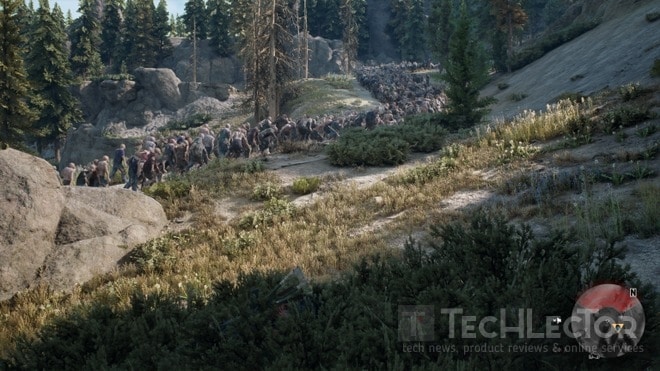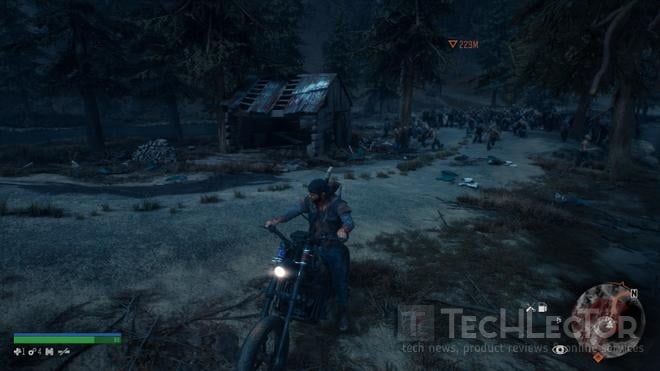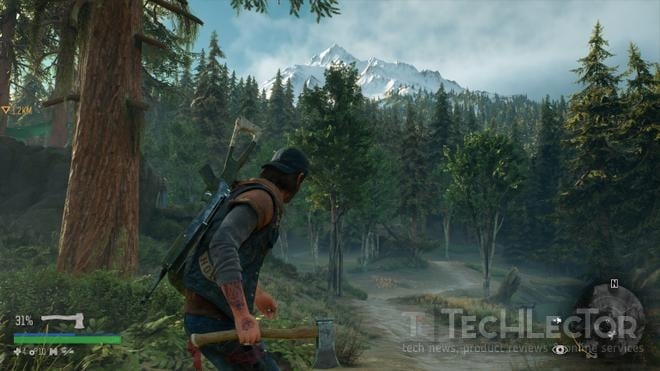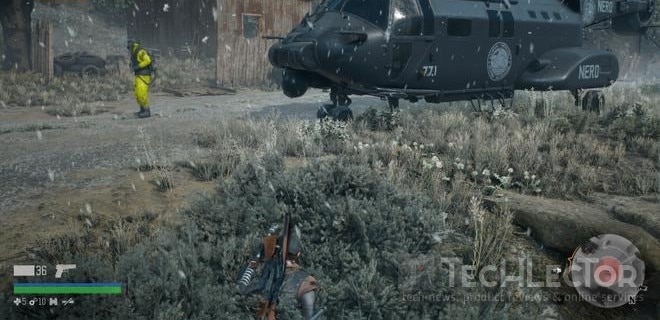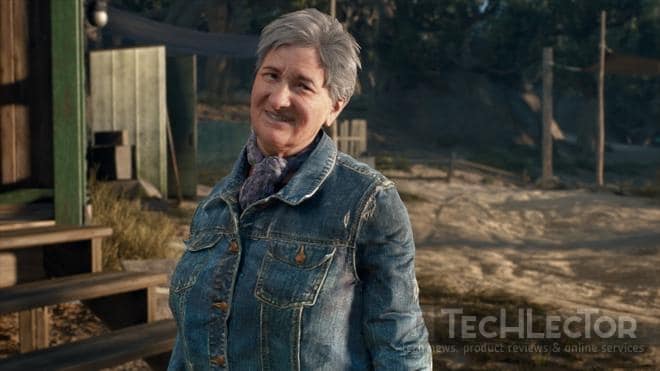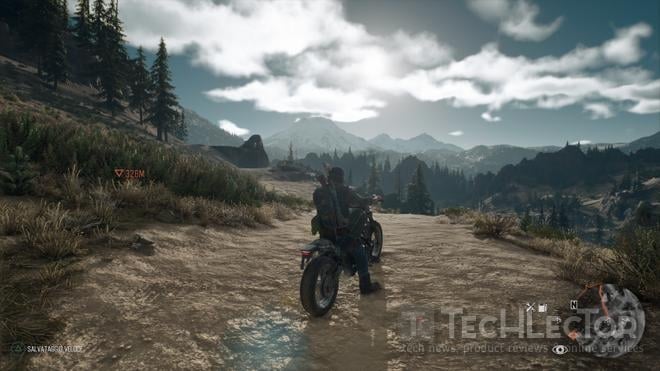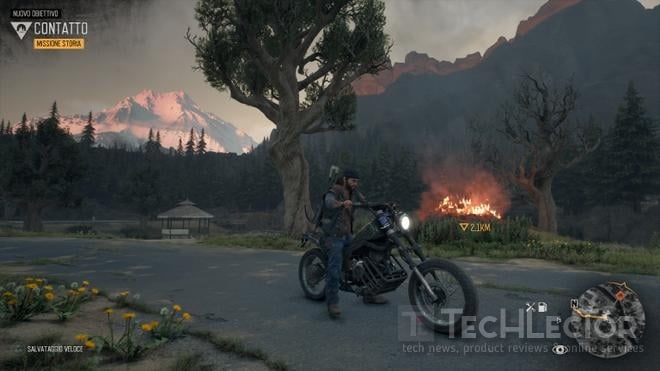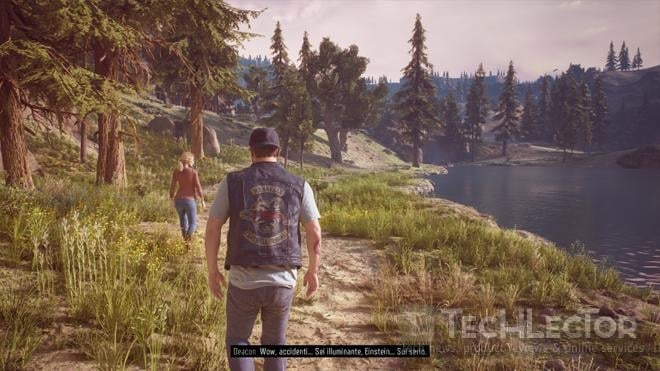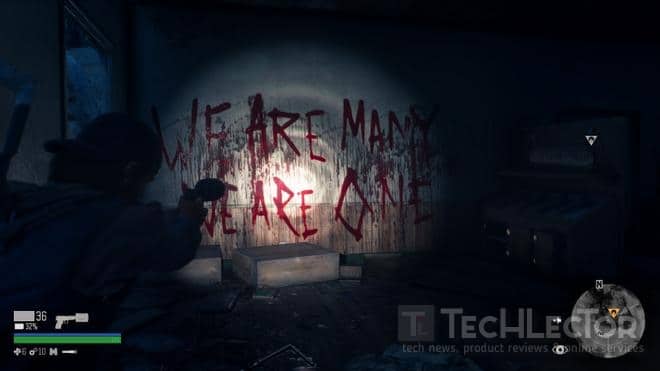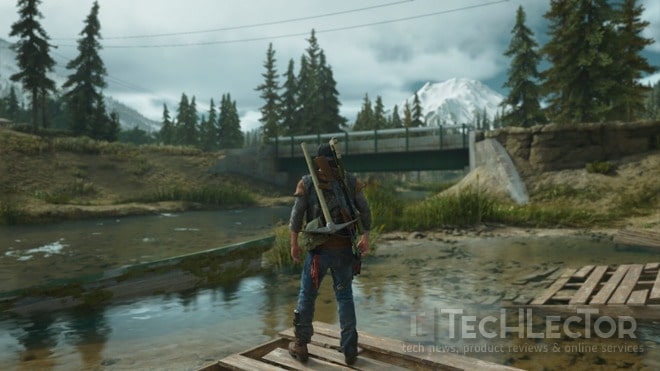Days Gone has finally arrived; almost three years after its announcement, the Bend Studio title has managed to reach the commercialization stage, taking on the role of flagship exclusive in PlayStation 4 for this mid-spring.
Certainly not a simple role, considering that Bend Studios are not a great team – we are talking about just over 100 employees – and that they do not work on a weight exclusive since 2012, when in collaboration with Naughty Dog they created Uncharted- The Abyss of ‘Oro, one of the PS Vita launch titles. Previously known for the Siphon Filter saga, the Bend Studios have completely turned the page by throwing themselves into the cauldron of post-apocalyptic settings, choosing to create an open world single player that renounces every element online to offer a long and detailed campaign – which will keep you busy for over 30 hours without going too far into secondary missions – supported by a narrative component that is always very present and articulated.
THE WORLD DIED- LONG LIFE AT THE OREGON
Days Gone takes us in the middle of a mysterious pandemic that has exterminated billions of mammals on Earth, turning them into completely hostile and ruthless creatures, ready to attack anything that moves. In the case of humans, these are called furious, they move in packs – or rather in hordes – and they prefer to act during the night, even if it is not uncommon to see them walking during daylight hours.
But the pandemic has also affected other species, changing the local fauna mainly composed of dogs, wolves, bears and even pumas, all made even more aggressive by the virus and strengthened in their physical faculties. For example, a mutated wolf is able to run at more than 100 kilometers per hour while tearing apart the tires of a motorcycle, citing one of the many recordings scattered around the game.
This is the world of Days Gone and our adventure leads us to explore a small fraction, more precisely the central area of Oregon that from Crater Lake moves towards the northernmost regions. The map is based as much as possible on the morphology of the real world and offers us scenarios in constant change, thanks to a dynamic climate system- from serene to rainy days, from windy to snowy, all following the classic alternation between day and night. Scroll through the days that you will also be reminded of when opening the menu, where a contractor will let you know how much has passed since the Apocalypse.
Oregon – besides being the state in which the Bend Studios are based – is also the birthplace of Deacon St. John, the protagonist of the events narrated in Days Gone. Deacon is a motorcyclist, an ordinary person, therefore, who like many others finds himself facing the moment in which the Apocalypse breaks out and the consequent collapse of civilization as we know it. In those hours he finds himself in the company of his ever-present friend Boozer and his wife Sarah, from whom he will be forced to separate already in the first minutes of the initial video in an attempt to save her life. The gesture that condemns him to remain to wander in what will soon become the nightmare, a no-man’s land plundered by furious and other dangers.
These are the premises that give way to the narration of Days Gone, a fairly classic and unoriginal script that will surprise and excite as you enter the plot. The story takes us straight ahead in two years’ time , showing us how Deacon and Boozer – whose fraternal bond is one of the main themes of the game – have been able to cope with the difficulties during their life at Randagi , a derogatory term used to define who, like them, he chose to live isolated without joining any field.
Yes, because the collapse of civilization has led to a complete reorganization of society– the cities and the big cities have disappeared, the lives of the few survivors now take place inside the camps, small self-managed communities, each characterized by very good rules and “laws” diversified among them. This is the first aspect that lets us understand how the Bend Studios have not dealt with the theme of the post-apocalyptic scenario lightly, but have tried to build a particularly realistic and credible world, where hypocrisy and respectability have been set aside – with several degrees – to respond to the pressing need to organize in order to survive and nothing more.
We therefore find a field in which a former conspiracy theorist took the lead and directs his community according to his convictions, another in which a sort of former jailer has established an apparently very supportive regime, but which in reality is based on extreme exploitation, yet another in which we try to apply what little remains of law and diplomacy to regulate life within it, and so on. Many small islands scattered around Oregon, all poised between internal revolt and a precarious truce with the outside world, in which Deacon moves fluidly from one to the other, thanks to its Stray status.
Helping a field will allow us to increase the level of trust, which is fundamental for unlocking access to new weapons, objects, and upgrades for our bike. In a world in total decline, money has lost its meaning and this means that every good deed towards the community is rewarded with credits that are valid only within that specific field. It will, therefore, be up to the player to choose where it is best to invest his time, where to direct one of the survivors who will happen to save from the attacks of furious or marauders, given that not all objects and upgrades are sold within each field.
THE BEST FRIEND OF CENTAURO
I mentioned the bike quickly, but this one deserves an important in-depth analysis, as it wouldn’t be wrong to define it as a real secondary character. In fact, it can be greatly enhanced, thanks to accessories that not only increase the tank capacity and resistance to damage but also reduce noise, install storage bags, add nitro for emergency shots and much more. In addition to manual movement, the bike can be used for quick journeys from one location to another – provided you have secured the road – and to save progress.
The maintenance of the bike can be done in the workshops or by collecting the wreckage that we find scattered around the world, of which we can have a limited quantity with us. The fuel, on the other hand, will necessarily have to be collected on the spot, but don’t worry.
Days Gone balances the survival elements present in the game well, intelligently choosing which ones to make realistic and which don’t. For example, the fact that the vehicle needs maintenance and refueling helps make us more cautious when traveling, but the fact that the petrol in the stations or canisters is practically infinite is a necessary expedient in order to prevent the player from having in front of him a limited number of kilometers that can be covered with the bike.
This means that if on the one hand, we have to carefully calculate the resources we need to go from A to B, on the other we also know that in point B we will always find the possibility of reloading them in some way, an aspect that gives us more security in the face the shift.
In the same way, the possibility of adding consumable silencers to weapons and the destructibility of melee-type ones invite us to use these elements with caution, however, we must not manage aspects such as sleep, hunger, disease and more. In short, Bend Studio has carefully evaluated which mechanics to exploit to increase the rate of difficulty and realism of the adventure, without however overbalancing excessively and proposing a frustrating and cumbersome experience. Difficulty which is not at all a problem if played in normal mode, but which becomes more intense in difficult mode, described by the authors themselves as the one on which the game was designed.
GROWTH AND CUSTOMIZATION
The growth and the expansion is not unique to the bike, but also to fully involve our protagonist. During missions and fights, Deacon will get experience points that will increase skill levels that will give skill points that can be spent in 3 different branches that improve melee attacks, distance attacks or survival skills. Each branch is made up of 5 stages and each one is activated when you have spent at least 2 points in the previous one, giving you a sense of progression. The choice to intervene in the branch that specializes us in distance or hand-to-hand combat depends exclusively on your style of play, while the survival branch offers useful skills in every case.
Days Gone can indeed be tackled either by jumping headlong into combat or by adopting a stealth approach. The unlocked abilities deeply affect the gameplay and change it making it more articulated and complex with the passage of time. For example, by choosing to specialize in melee combat, you will have the opportunity to learn skills that increase the damage of this kind of weapon, increase the length of the combos, or that still allow you to stealthily kill enemies that would otherwise be impossible to catch off guard.
In contrast, specializing in ranged attacks will increase your ability to aim, allow you to access Concentration mechanics (briefly slow down time while you are aiming), boost damage and bullet piercing, ammo for magazine and so on. The skill branches, therefore, allow the player to actively intervene on the gameplay- right from the start, there is the possibility of knowing exactly all the names and effects of the abilities present in each branch, so as to be able to consciously choose what to bet on and in which order unlock the skills.
The growth of the character is then based on a further mechanic disconnected from the branches, which allows to increase the maximum health, the bar of vigor and concentration– it consists in recovering particular injectors abandoned in the fields of research teams. Each must first be secured and inside it you will find the object with which to enhance one of the 3 items. The object in question is the same for all 3, so also, in this case, the choice must be based on your approach to gameplay.
Deacon also has its own innate ability to follow the tracks, the instinct of the survivor, thanks to which it will be possible not only to reconstruct what happened in the place of a mission but also to find hidden objects, doors and understand which vehicles can be tampered with to recover useful debris.
STEALTH OR ACTION? TO YOU THE CHOICE
Pad in hand is very easy to control Deacon in every situation, whether you are exploring or involved in a fight, thanks to very intuitive and easy to master standard commands.
Just above I mentioned the stealth aspect of the game and even in this case, it is good to spend a few words to investigate the issue further. In the world of Days Gone enemies identify you through hearing and sight and you can avoid being caught using the various covers, bushes or small diversions. An entire category of weapons is dedicated to diversions, ranging from simple pebbles to more complex baits (called attractors ) that will make the enemies converge in a specific place. Each of these weapons is more or less effective depending on the type of opponent, so it is a good idea to plan a strategy before attacking a base, a busy field or something else.
Remaining on the subject of weapons, let me point out that the player can equip himself with a pistol, a secondary weapon (rifle, assault rifle, miter, etc.), a special one (crossbow or sniper rifle) and a melee that can be collection around. The inventory is enriched with the classic objects of care, molotovs, grenades, stones, attractors and so on. Many of these special items can be crafted in a system almost identical to that of The Last of Us, or by collecting items such as rags, tonics, empty bottles, kerosene, etc. The collection of objects also includes plants, meat and sizes (the remains of monsters) which can then be exchanged for fields for credits and affinities.
But who are we to defend all these weapons from? In addition to the aforementioned furious (which in turn are divided into larvae, wanderers, grays, giants, and mermaids) and mutated animals, the other most dangerous enemies in the world of Days Gone are the very human survivors. The hostile ones are divided into two groups, the Repugnant and the Marauders. The latter are the simplest to explain- it is nothing more than other people who have gathered in small groups and who will ambush and ambush you in various ways.
The Repugnant, on the other hand, play an important role in the development of the plot and are part of a sort of religious sect that has chosen to accept the decline of the world and to worship the furious. He then tries to imitate the madness, through the use of drugs that make him immune to pain, a practice that allows him to flagellate his body of burns and self-inflicted wounds. In addition, each repugnant renounces its identity and its individuality, to take part in a community that is at home in the ruined world. As already mentioned, their role is central to the development of the plot, but obviously, they will not anticipate anything of what concerns them.
However, know that all the elements discussed so far contribute to the creation of a dynamic game world populated by random events, like a group of marauders who set a trap in the middle of the road, a horde that rises suddenly, a desperate person waiting to be freed and much more. In its close connection with the theme of death, Days Gone is a game more alive than ever. It is in this environment that Deacon carries on his adventure, in the hope of being able to retrieve some information on Sarah’s condition. The birth and evolution of the love story between the two will be revealed to us step by step during the nostalgic flashbacks that sometimes they come back to Deacon’s mind, thanks to which we could take a look at Oregon before the Apocalypse.
I conclude this section by highlighting the care in the artistic sector, thanks to country soundtracks that increase the sense of nostalgia that shines through in every single moment of the adventure, and the excellent realization of the rural landscapes of Oregon, which can be best immortalized through the very complete photo mode present in the title.
FAULTS DO NOT MISS
So many fine words have been spent on Days Gone up to this point, but like any self-respecting product of human labor, this title certainly cannot be defined as a perfect work without defects. The long list of positive aspects therefore regards elements such as the artistic sector, balanced gameplay – net of a slightly lazy camera to follow you during the most frenetic melee fights – and everything related to the plot and personal growth of the characters, while the negative aspects reside mainly in the technical sector and in the structure of secondary missions .
Creating a fairly large open world, with so many random elements and doing it with a fairly small team is always a challenge, and the Bend Studio title shows us that there is still a need for further work to refine and clean the code ( in recent weeks we have gone from version 1.00 to 1.01, 1.02 and 1.03, the latter containing the launch build ), especially during the final phases of the adventure.
Most of the time there are no problems of any kind- the frame rate tends to be stable and just a few sporadic interpenetration bugs are found, as well as some small fps drop when crossing areas that mask uploads (for example long tunnels). But it is when one arrives in the second part that the declines become more frequent, even in areas that are quite bare and lacking in elements that can make one think of a sudden weighting of the game scene. Unfortunately, this is not the most serious aspect.
During the last sessions of the game, you will have frequent cases where the sound of the cutscenes is totally out of sync with what happens on the screen, while in some cases there are audio holes in the dubbing (very convincing and of Italian quality). In even rarer cases it can happen that a mission is not completely loaded and this leads to the blockage of the character on the spot, with the forced closure and reopening of the game as the only solution. All this on PlayStation 4 Pro, the platform on which I tried Days Gone.
In short, important bugs that can be corrected with the release of updates aimed at making the game more stable, but of which we cannot give you any certainty regarding the timing. So far we have noticed a good frequency in the release of the patches (the 1.03 weighs over 20GB), however, the current state of the game is this and must be evaluated for what it is, not for what it will be or could be.
BEWARE OF REPETITIVITY
These are the technical problems of Days Gone, which go to undermine a sector that is otherwise of good quality and very nice, attentive to detail and with a good characterization of the characters, the environment, and the fields.
Leaving the technical issues, the title also presents some weaknesses regarding the repetitiveness of secondary missions. Basically the game offers narrative arcs that complement each other based on the number of missions you perform within them. In addition to the strings linked to the main plot, you will find others related to aspects such as the disinfestation of the areas occupied by the furious, the extermination of the repugnant, the investigations into what led to the spread of the virus and the role of researchers and part-time work from Bounty Hunter.
All the missions contained within these categories are practically identical to each other and are reduced to performing the same type of actions in various parts of the map. Of course, the variety is given by the fact that each field must be approached in a different way, each nest is positioned in places that are more or less easy to identify, motorbike chases to catch a fugitive present unexpected data precisely from the variables that characterize the guide and so on, but this does not change that the type of missions is still repetitive in the long run.
Among the negative aspects, I would also like to point out the motorcycle driving system, which is a little too imprecise and will always give you the impression of never having full control of the vehicle. A bit ‘a contradiction, considering that the protagonist is an experienced motorcyclist, who therefore should not have problems of any kind. It does not even enhance the artificial intelligence of the enemies, quite basic and very simple to deceive, resorting to all the diversions available to Deacon. In some cases, it is simply not credible that experienced and invincible fighters – for plot reasons – let themselves be distracted by a stone thrown in the opposite direction.
CONCLUSIONS
As you will have understood by reaching this point, Days Gone is a game that offers much more than what the trailers have let us understand in recent years. Video after video, the media campaign that accompanied the Bend Studio title has focused attention on combat and the huge hordes of furious people, ignoring the importance of the narrative sector.
Personally, I don’t deny having approached the title with a certain suspicion, while I was pleasantly satisfied already in the first hours of hours of play, as soon as it became clear that the plot at the base of the game was not a simple pretext to throw you to the massacre of hordes of infected. Far from it, Days Gone is a title that first of all wants to tell a story of survival and adaptation, of characters who have to fight to get to the next day in a world that is no longer under their control.
Each camp has its own underlying ideology; you may find yourself more at ease in hanging out in one rather than another, perhaps because you share more the idea of a society that has to offer you. And Deacon St. John is not a saint, he is not a hero- he is an ordinary person, who tries to survive by clinging to the continuous hope that one day the daily suffering can be rewarded by the meeting with his wife Sarah.
Meanwhile, he avoids any other connection, he shows disinterest in life outside of himself and of his friend Boozer, the only person for whom he is willing to recover his humanity, which has now become a burden in a world that rewards only strength, the violence, madness, and deception. In his title Bend Studio also accepts to deal with very strong and controversial subjects, placing the characters in front of desperate situations that will change their life forever irremediably, or even choosing to actively involve children in the infection, transforming you into so-called larvae.
All these elements make us understand how Days Gone has much more to tell than we could have imagined. During the review, I hardly ever talked about the mechanics of the hordes, one of the most publicized ones, for a very specific reason- this is not the heart of the game.
Of course, the horde suddenly appears as it emerges from a destroyed train, wandering the streets, chasing you and killing you mercilessly if you are not faster or if you have not planned a way to deal with it, but you could fully enjoy the I play even without ever facing one. This is not the focal point of Days Gone, this is not where the Bend Studios wanted to go. Perhaps Sony’s marketing department didn’t have the courage to believe more in the other aspects of the title, giving too much importance to an element that is so spectacular, but also just as secondary.
Unfortunately, however, it is necessary to deal with a technical sector that still needs refinement, which is therefore able to guarantee a more stable frame rate even in the advanced acts of the game and which solves some problems of synchronization between the spoken word of the cutscene and the video , some random bugs during missions and more.
In short, Days Gone is a small welcome surprise that we recommend you try if you love the survival genre and you are looking for an engaging single player experience – perhaps not the most original – and rewarding. The game is complete as it is sold, even if some free additional content is planned for the next few weeks.
PROS
- Exciting plot, full of twists and lots of skills that positively affect the gameplay.
- Very well contextualized survival component.
- The system of fields and credits is very credible and well structured.
- Strategy and a wide choice of approach to combat.
- Very nice artistic compartment (audio/scenography)
- Full photo mode
- Credible characters and world.
CONS
- A few bugs too much.
- Unstable frame rate in the advanced stages of the adventure
- Audio of the cutscenes not in sync in the advanced phases.
- The missions tend to be repetitive.
- AI enemies; very basic.
